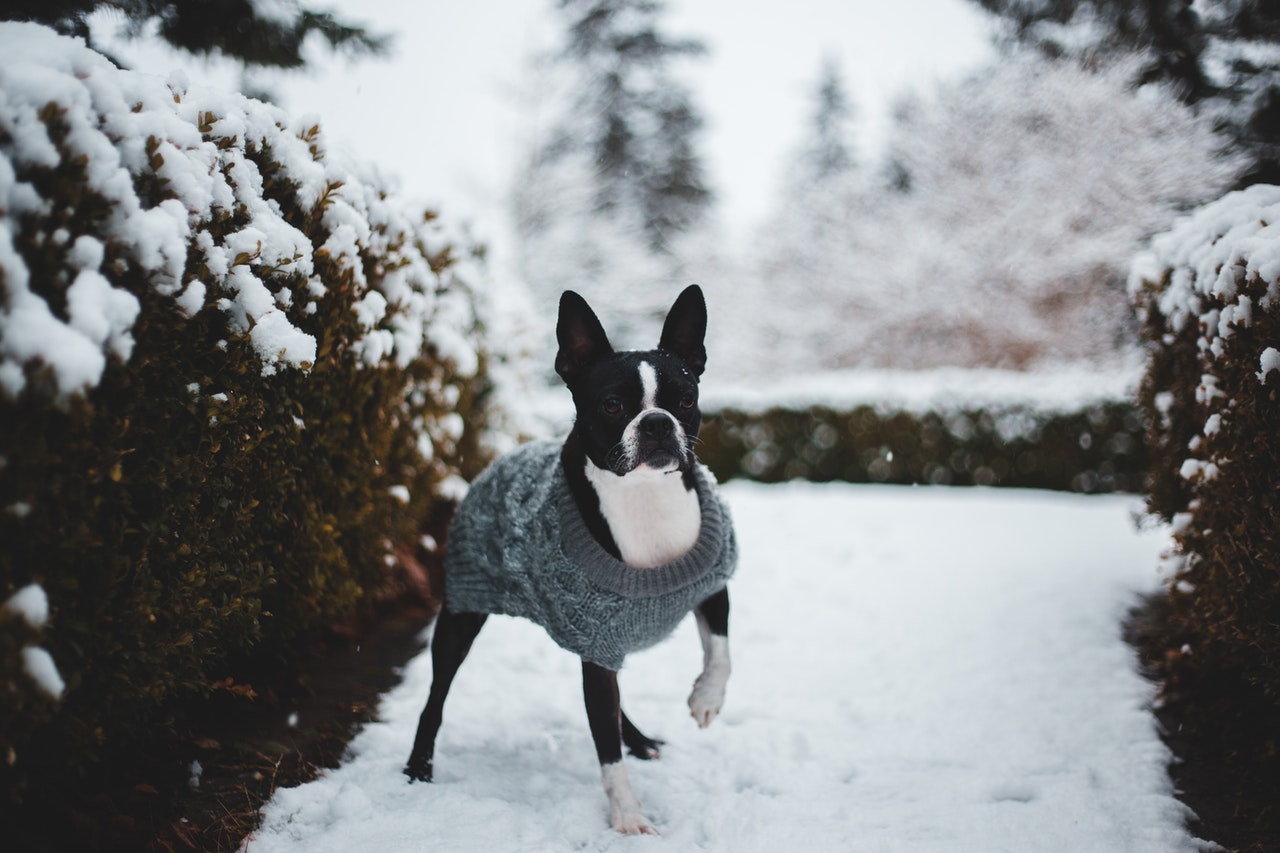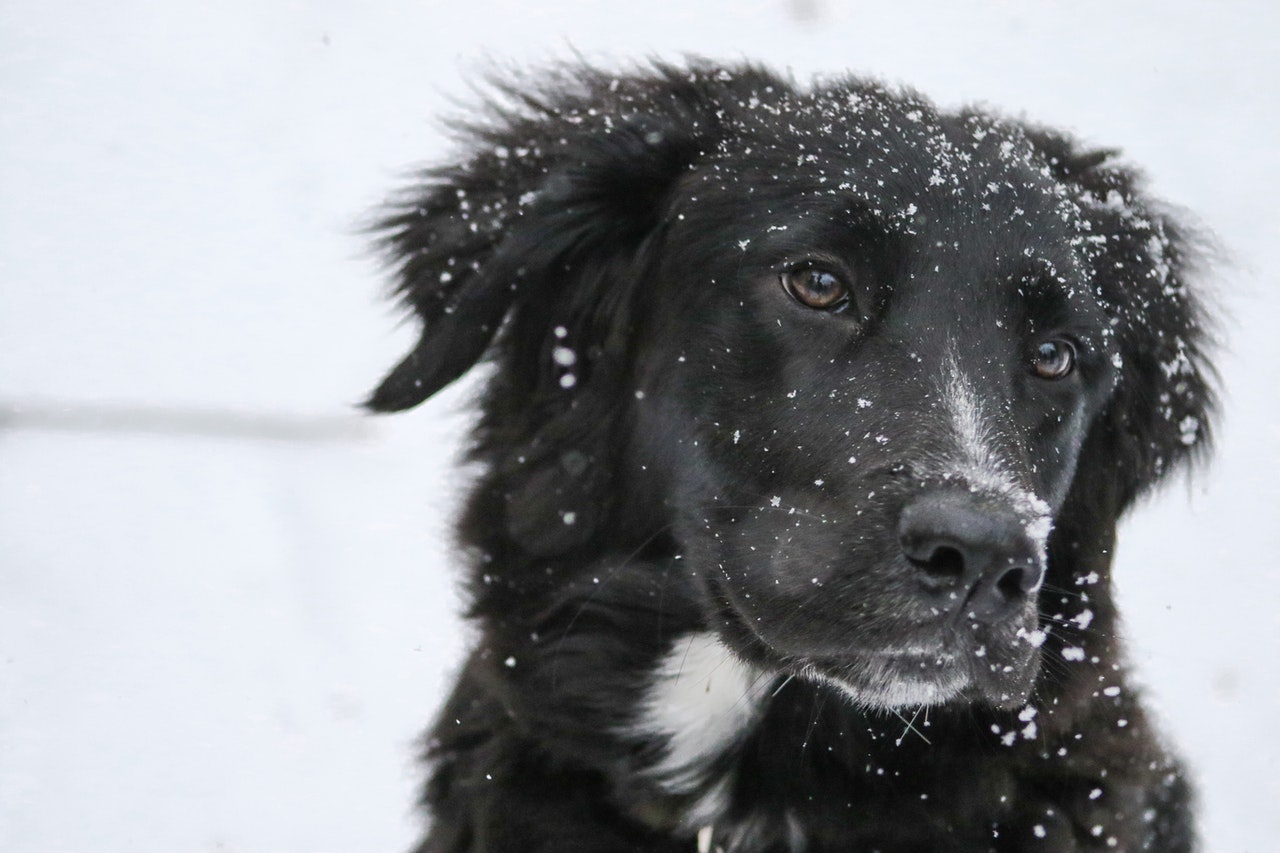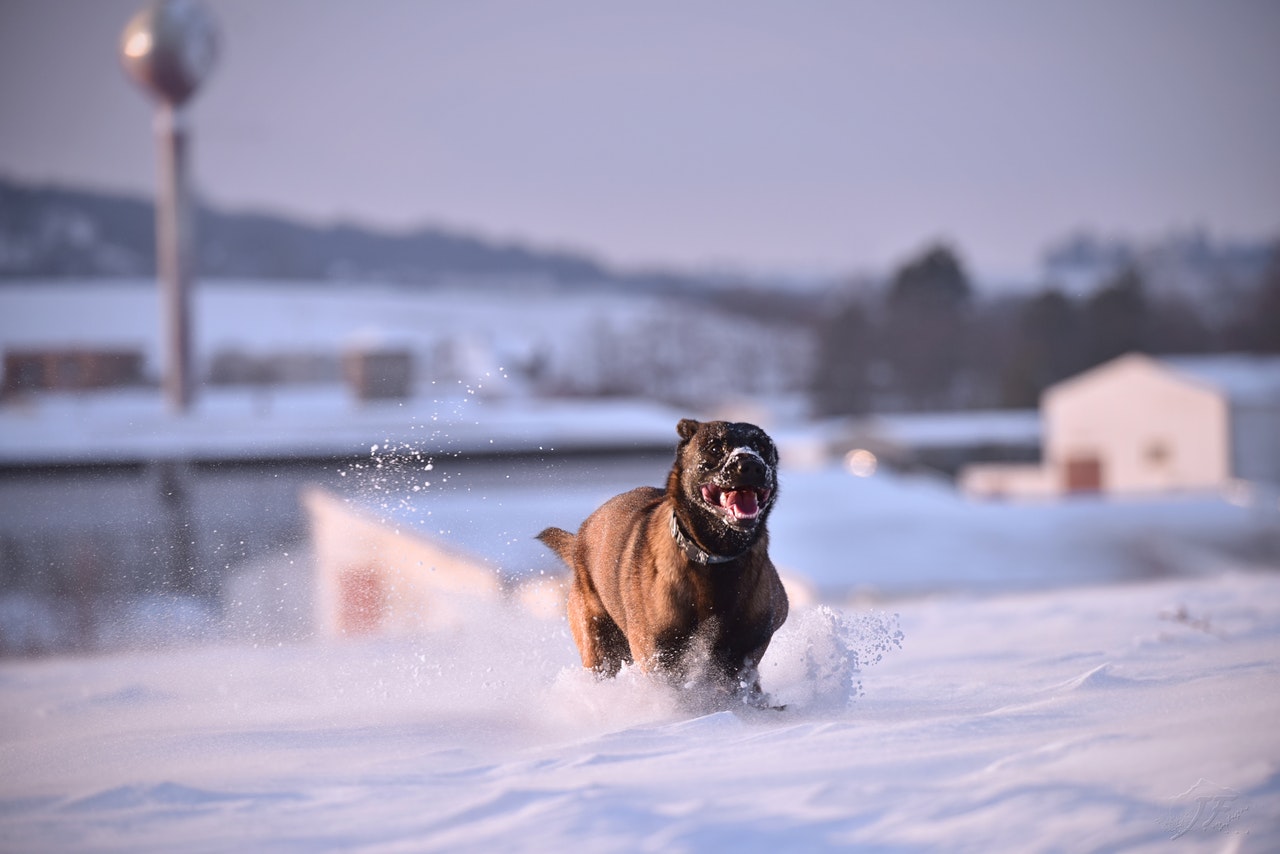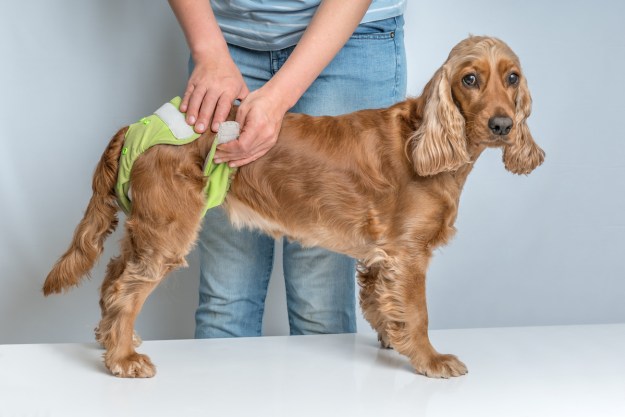Cold weather for dogs often equals romping through the snow and using a convenient snowman as a fire hydrant. But if the weather outside is frightful, dogs can develop chapped, cracked noses and paws and dry, flaky skin elsewhere. And those aren’t the only risks. Potentially toxic deicing agents can make your dog seriously ill if ingested; they can also cause paw irritation. Even Nordic breeds like huskies can suffer the consequences of an ill-prepared trek through the snow. Here are six precautions you should take if you plan to spend time walking your dog in a winter wonderland.

1. Make sure your dog can handle cold weather
Regardless of your dog’s age, you may want to take him in for a checkup before temperatures drop. Older dogs have an increased risk of developing arthritis. Because cold weather exacerbates arthritis, your vet may offer helpful suggestions that can improve your pooch’s tolerance to cold. Senior pooches are also more likely to slip and fall, putting them at risk of broken bones. If your dog suffers from a chronic condition like diabetes or heart disease, keep your winter walks brief. Senior dogs, young puppies, dogs with health conditions, short-coated dogs, and thin dogs are much more likely to suffer from frostbite and hypothermia.
2. Give your pup a bath when you get home
From deicers to antifreeze, winter brings with it numerous chemicals that can be irritating or toxic to your pup. Use a fragrance-free, hypoallergenic dog shampoo on your pup’s paws, legs, and belly when you get in from the cold. If you don’t give him a bath, the chemicals used in deicers could irritate his paws. Worse, if your dog ran through antifreeze while he was outside playing, ingesting the substance when he bathes himself could prove fatal. By the same token, you’ll want to clean up the garage or driveway quickly after topping off the antifreeze in your car. It may seem like a hassle, but your dog’s life is worth the minor inconvenience. If you think there’s a chance your dog has ingested antifreeze, take him to the vet immediately.
3. Keep your fur baby warm
Is there anything more adorable than a dog wearing a sweater and booties? Probably not. In addition to being absolutely precious, sweaters, dog coats, and booties can make those outdoor potty breaks a lot more comfortable for your fur baby. Make sure to purchase clothes and booties in the proper size, as anything too small will feel uncomfortable, and items that are too large may slip off. You’ll want to keep a few sweaters and booties on rotation. Your pup doesn’t want to wear wet clothes any more than you do.

4. Check your dog’s paws after each walk
Just like your skin can crack and peel during the harsh winter months, your fur baby’s nose and paws are susceptible to the cold. The combination of cold, dry weather, deicer, chemicals, ice accumulation, and rock salt can lead to sore, irritated, injured paws. If your dog begins to limp while you’re outside, cut your walk short and take him home. Make sure you check his paws thoroughly, especially if you have a long-haired breed, as ice can become lodged between his toes.
5. Make sure your pet can find his way home
Snow and ice can mask the usual scents your dog needs to navigate his way back to you. Ensure your pooch is microchipped and wears a collar with your current address and phone number in case he gets lost. To make sure your pup stays safe, don’t let him outside unattended and without a leash.
6. If it’s too cold for you, it’s too cold for your dog
Have you ever wondered, “Do dogs get cold?” According to Zay Satchu, veterinarian and founder of Brooklyn, New York’s Bond Vet, “Breeds with thicker coats are typically derived from colder climate areas and will have a higher tolerance for low temperatures.” Generally speaking, if you think it’s too cold to be outside, it’s a good idea to keep your pup indoors. You should never leave your dog unattended in cold weather, as it could result in hypothermia or frostbite, or even have fatal consequences.

Going outside for a brisk walk with your dog can be invigorating, but that doesn’t mean you should assume he’s enjoying himself. Look for any signs of discomfort like limping, shivering, whimpering, or anxiety. If your dog looks miserable, he probably is. Keep your fur baby bundled up, look out for harmful chemicals, make sure to give him a thorough wipe-down when you get home, and both you and your pooch will be able to enjoy your winter walks.
Editors' Recommendations
- Why does my dog have a bald patch on their tail? Here are the answers you need
- Looking for signs your dog has ticks? These telltale symptoms mean you have a flea or tick problem
- Could it be a dog paw infection? Signs, symptoms, and treatments for these pesky, painful issues
- Is your puppy breathing fast while sleeping? Here’s when you should worry and how to help your dog
- Why do you often find your dog with their tongue out? Here’s what vets say about the ‘blep’




